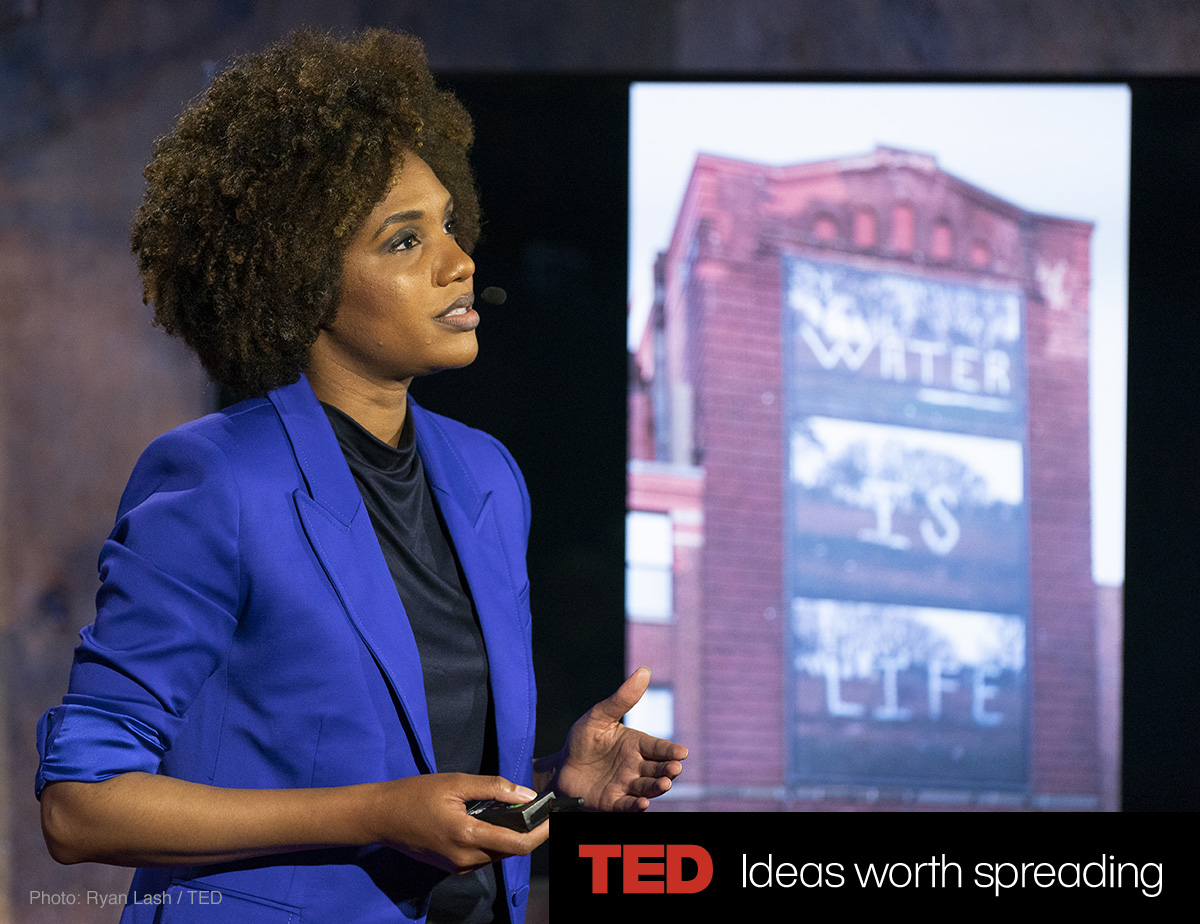On working with Dignity
The Creative Independent
From a conversation with Daniel Sharp
Visual artist LaToya Ruby Frazier on the value of photography, the billboards she made for the ENOUGH of Trump campaign, the collaborative process of photographing Breonna Taylor’s family, and why art is intrinsically political.

Two pieces you made for the Enough of Trump Campaign will go up as billboards in swing states before the 2020 election. One of them pairs COVID-19 with air pollution. Another is a picture of Donald Trump with superimposed names of Black bodies murdered by the police. Can we go through these and describe what we’re looking at?
My artistic practice—and personal life—is focused on environmental justice issues, healthcare, and equity. I can’t avoid my own background and where I come from. We know that the industrial Heartland of America plays a significant role in our elections. I will never get over the fact that Hillary had that election stolen from her. And part of the reason had everything to do with States like my home state, Pennsylvania. It had everything to do with the arrogance of that campaign to decide not to come and speak to working-class Americans, not to come to speak in the Rust Belt, not to speak to blue-collar workers.
I wake up every day thinking about Black people being murdered by the State. We live in a police state. We are constantly under siege. And in addition to being under siege in this very visible way of being gunned down or placed in a chokehold or a knee on the neck, there’s a slow violence of pollution and toxicity that are invisible silent killers surrounding Black bodies.
We are biological creatures, organisms, connected to our environment. For multiple generations, we’ve been redlined to sacrifice zones contaminated by industrial and fossil fuel corporations. The United States Steel Corporation has broken many of the EPA regulations that have been put in place, and the Trump administration had the audacity to allow them to release more chemical emissions. Compound that with the COVID virus, it is inhumane.
When we talk about America, Andrew Carnegie, and industrial prosperity, we must remember that his first factory, The Edgar Thomson Steel Works, depicted here in the billboard runs along the ancient Monongahela river. This is native Indigenous land. This is the same site where the Battle of the Monongahela was fought in 1755. This land where this industrial polluter is located is already sitting on massacres and bloodshed and we keep failing to see that. For me, my photographs are like an excavation. They’re a visual archeological dig that I’m trying to put up and show people that all of this permeates within us.
I think a lot about the difficulty of discussing environmental racism because it doesn’t get headlines and gets sidelined. It’s only over time that you see these anti-environmental policies build up until you realize your river is polluted, right?
Yeah, and it’s so polluted, and then your governor denies democracy, vetoes your vote, and the next thing you know you’ve got lead contaminated water with Legionella bacteria inside of it coming into your homes and going into the mouth of your children, right? So this is serious. And it must be visualized.
Like on a billboard.
Right. It has to be put up large for people in these particular states to see that this is your choice. This is why you must act. Imagine, you’re in your car, sitting in traffic, polluting the air with your fossil fuel vehicles; nonetheless, you are in your car in traffic. Most people like to drive to clear their mind. If they see this billboard and if they see this connection—especially if they have lost a loved one who has given up their health to work in steel mills and coal mining and fossil fuel companies—if they see this, it should move them to act. I fundamentally believe that is the role of an artist, especially when we are facing a crisis like this.
I have a lot of late-millennial friends who feel disillusioned by the Democratic Party, including myself. But you’re right that this cannot be a tit for tat. This is a life or death.
I had never photographed a politician in my life. Never wanted to. But when the opportunity came to photograph Stacey Abrams, I made room in my overbooked schedule to go photograph her. I believe in this woman, her vision, what she’s been called for, the fact that she’s fighting for fair voting. The fact that she is carrying on that legacy, that so many people died for just so we could vote. We have to get back to these fundamental core values that have been removed from us because of white supremacy, fascism, and a blatant disregard for humanity and human life. This is our dignity and soul at stake—but let’s not get it twisted. After I proudly vote for the Democratic Party, I will be writing letters and protesting Biden and Harris if they don’t do right by the poor, and the working people of this country.
Courtesy of: The Creative Independent

